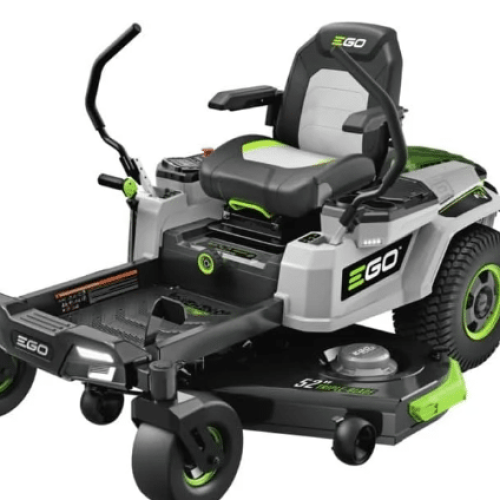A Beginner’s Guide to Lawn Fertilization: When, What, and How to Apply
Let me ask you? Did you know that keeping your soil’s pH between 6 to 7 boosts nutrient absorption for your lawn1? Fertilizing your lawn is key to keeping it lush and green all year. It’s not just a nice-to-have task. Its major. Hi its JV Charles.This article is jam packed with fertilizing insight your gonna love! So enjoy!
Getting a healthy, green yard might seem hard at first. But, it’s all about the basics. For example, use 1 pound of nitrogen for every 1,000 square feet of lawn1. This simple tip can make a big difference in your lawn care.
This guide covers the basics of lawn fertilization. You’ll learn about the N-P-K ratio and when and how to apply fertilizers. Let’s get into the details and help you create a lawn that will impress your neighbors.
Key Takeaways
- Soil pH levels should range between 6 to 7 for optimal nutrient absorption1.
- Apply 1 pound of nitrogen per 1,000 square feet for effective fertilization1.
- Understanding the N-P-K ratio (e.g., 29-0-5) is crucial in lawn care1.
- Warm and cool season grasses require different fertilization approaches2.
- Conduct regular soil tests to determine nutrient needs1.
Understanding the Basics of Lawn Fertilization
Lawn fertilization is key to keeping your soil healthy and your grass growing well. It helps your lawn stay green and strong. Knowing the basics of fertilization helps you make your lawn look its best.
Why Fertilize Your Lawn?
Fertilizing your lawn adds important nutrients that your soil might lack. These nutrients help your grass grow strong and fight off diseases. Regular fertilization is crucial for your grass to grow well nutrients for fertilization3.
Essential Nutrients: N-P-K Ratio
The main nutrients for your lawn are nitrogen (N), phosphorus (P), and potassium (K). These are often called N-P-K. Each nutrient has a special job:
- Nitrogen helps your grass grow leaves.
- Phosphorus helps with root and seed growth.
- Potassium makes your grass stronger against diseases.
Fertilizers show their nutrient levels with three numbers, like 20-20-20. This means each nutrient is 20% of the fertilizer. Finding the right balance of N-P-K is important for healthy grass.
Types of Lawn Fertilizers
There are many types of lawn fertilizers, each with its own benefits. Here are a few:
- Granular Fertilizers: These come in slow-release and quick-release forms. They’re easy to spread and release nutrients over time. Slow-release fertilizers last 6-8 weeks, while quick-release fertilizers work right away4.
- Liquid Fertilizers: These work fast and are applied with a sprayer. They get absorbed quickly by the grass.
- Organic Fertilizers: Made from natural stuff like manure, these fertilizers are good for the soil. They release nutrients slowly4.
- Inorganic Fertilizers: Made in labs, these fertilizers give specific nutrients fast. They’re easy to find4.
Choosing the right fertilizer depends on your grass type, soil, and environment. For example, avoid using phosphorus near water to prevent pollution4.
To get the most from fertilizers, keep your soil pH between 6.0 and 7.03. Also, plan your fertilization schedule for the best times of the year for your grass3.
A Beginner’s Guide to Lawn Fertilization: How to Apply
Getting fertilizer right is key for a lush lawn. This guide will help you with soil testing, picking the right fertilizer, and getting your lawn ready for it.
The Importance of Soil Testing
Doing a soil test before fertilizing is vital. It shows what nutrients and pH levels your soil has5. Soil pH affects how well your grass absorbs nutrients, impacting its health5. Most grasses do best in a pH of 6.5 – 75. Using soil test kits helps figure out what to add to get to that ideal range.
Choosing the Right Fertilizer
Finding the right fertilizer depends on your lawn’s needs, found through a soil test5. Fertilizers are labeled by their N-P-K ratio, for nitrogen, phosphorus, and potassium. These nutrients are crucial for plant growth5. Spring fertilizers boost growth and color with more nitrogen, while autumn ones help roots with potassium and phosphate6. Slow-release fertilizers work longer, and quick-release ones last a month6.
Preparing Your Lawn for Fertilization
Before fertilizing, your lawn needs some prep. This includes adjusting soil pH if needed and controlling weeds with herbicides5. Wait about a week after weed killers before fertilizing5. Also, mow your grass right and water it well to help absorb nutrients. Good lawn preparation is key for the best fertilization results.
Always read and follow the fertilizer instructions. Wear gloves and goggles to protect yourself from skin and eye irritation5. Watering after fertilizing helps push nutrients into the soil, promoting healthy grass growth5.
Choosing the Right Time to Fertilize
Timing your lawn fertilization is key to a lush, healthy lawn. Fertilizing at the right time means your lawn gets the nutrients it needs most.
Seasonal Considerations
Fertilizing your lawn by season is essential. For cool-season grasses, late spring and early fall are best. This supports their growth during peak times7. Warm-season grasses do well with fertilization in late spring or early summer7.
Spring fertilization is crucial for cool-season grasses to recover from winter8. It’s a key part of your lawn care routine8.
Ideal Weather Conditions
Weather affects how well fertilization works. Apply fertilizer when soil temperatures hit about 55 º Fahrenheit in early spring. This is when your lawn starts growing actively8.
Avoid fertilizing in extreme weather to prevent damage and nutrient loss7.
For best results, fertilize in the early morning or evening. This avoids heat stress and helps nutrients absorb better7. Also, clear weather is best to prevent nutrient runoff.
A customized lawn feeding schedule keeps your lawn healthy all year. Applying fertilizer every 6 to 8 weeks during growth is common9. For more tips, visit When to Fertilize for a Greener9.
Calculating the Right Amount of Fertilizer
Finding the right amount of fertilizer for your lawn is more than just picking a bag. It’s a science that needs careful calculations to get the right nutrients. A lawn fertilizer calculator is key, helping you figure out how much is needed per square foot. This avoids too much or too little fertilizer.
Start with a soil test to know what your lawn needs. This test shows what nutrients are missing, helping you pick the right fertilizer. For example, a fertilizer with an NPK of 10-10-10 has 10% nitrogen, phosphorus, and potassium10. This ensures your lawn gets the right mix, keeping it green and healthy without harming the environment.
Then, measure your lawn’s area. For a rectangular lawn, multiply length by width. For a triangular lawn, use base times height divided by two. After measuring, you can figure out how much fertilizer you need. For instance, a 25,000 square foot lawn might need 125 pounds of a 20% nitrogen fertilizer11. By following these steps and using a lawn fertilizer calculator, you can fertilize your lawn well and protect the environment.
FAQ
Why should I fertilize my lawn?
Fertilizing your lawn is key. It adds nutrients that your soil might lack. This helps your lawn grow lush and green. It keeps your yard looking vibrant and healthy.
What are the essential nutrients my lawn needs?
Your lawn needs nitrogen (N), phosphorus (P), and potassium (K). These are listed as an N-P-K ratio on fertilizer. Nitrogen helps leaves grow, phosphorus supports roots and seeds, and potassium boosts disease resistance.
What types of lawn fertilizers are available?
You can choose from granular or liquid fertilizers. Slow-release fertilizers give nutrients over time. They offer long-term benefits for your lawn.
Why is soil testing important before applying fertilizer?
A soil test shows what nutrients your soil lacks and its pH level. This info helps you pick the right fertilizer. It ensures your lawn gets the nutrients it needs.
How do I choose the right fertilizer for my lawn?
First, test your soil to find out what nutrients it needs. Then, choose a fertilizer with the right N-P-K ratio for your lawn. This is based on the soil test results.
What should I do to prepare my lawn for fertilization?
Before fertilizing, check your soil’s pH and control weeds. Make sure your lawn is mowed and well-watered. Proper preparation helps the fertilizer work better.
When is the best time to fertilize my lawn?
Fertilize when your lawn is actively growing. This varies by grass type. Early spring or fall are usually best. Avoid fertilizing before big rains.
What are the ideal weather conditions for fertilizing my lawn?
Fertilize on clear days without rain. This prevents nutrient loss and helps your lawn absorb nutrients better. Apply in the early morning or evening to avoid heat stress.
How do I calculate the correct amount of fertilizer to use?
To avoid too much or too little fertilizer, use a soil test. It tells you the right N-P-K ratio and amount for your lawn. Measure your lawn’s size to apply the right amount.






